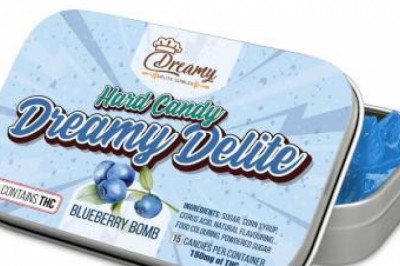views
Conventional roll shaft production consists of roller body initial rolling, initial static balancing, shaft head assembly, finishing rolling and dynamic balancing. After the roller is formed, the surface treatment or coating, such as painting, galvanizing, TEFLON spraying, rubber coating, chrome plating, ceramic spraying and oxidation, is also needed for rust prevention, corrosion resistance, wear resistance and support. Carbon fiber roller axes are generally used in high-precision instruments, which have high requirements in balance accuracy and other aspects. In terms of production and manufacturing, they generally include the following aspects:
Carbon fiber roller rough production
Carbon fiber roller is usually made of carbon fiber pipe by winding molding process. Carbon fiber winding molding process is the continuous fiber (or cloth tape, pre-soaked yarn) soaked in resin glue solution is wound to the core mold according to a certain law, and then cured, demoulding, products.
According to the physical and chemical state of resin matrix during fiber winding forming, it can be divided into dry winding, wet winding and semi-dry winding. Dry winding adopts prepreg yarn or tape, which is heated and softened to viscous state on the winding machine and then wound to the core mold. Wet winding is the fiber bundle (yarn belt) after dipping glue, under tension control directly wound to the core mold; Semi-dry winding is after fiber dipping, a drying equipment is added on the way of winding to the core mold to remove the solvent in the dipping yarn. Compared with dry method, the pre-dipping process and equipment are saved. Compared with wet method, the bubble content in the products can be reduced. Among the three winding methods, wet winding is the most widely used, while dry winding is only used in high performance and high precision cutting-edge technology fields.
The carbon fiber tube using the winding molding process can design the winding law according to the force of the product, and give full play to the strength of the fiber. Compared with the metal tube with the same volume and pressure, the weight can be reduced by 40%-60%. At present, this process has realized mechanization and automatic production, product quality is stable, accurate, high labor productivity, can be made into different lengths, diameters and wall thickness of carbon fiber pipe.
The processing of the outer circle and section of carbon fiber roller
For the processing of the outer circle and section of the carbon fiber roller, the program is divided very carefully, including rough turning, semi-finishing turning, finishing turning, rough grinding, fine grinding, grinding, ultra-finishing, fine turning, etc. Each program has different indexes in economic accuracy and surface roughness. The processing of the outer circle and section of the carbon fiber roller is summarized as three stages below:
Roughing stage: mainly to efficiently remove most of the allowance on various machined surfaces and provide a benchmark for semi-finishing. Rough machining is carried out on machine tools with high power, low precision and high productivity as far as possible, so as to give full play to the potential of equipment and improve production efficiency. In this stage, it is necessary to find and deal with the blank defects in time and correct the position errors of the previous process in time, such as bending, displacement, eccentricity, deviation, non-parallel, non-vertical and so on. If the error can not be corrected, it will be marked as invalid, so as not to continue processing waste time.
Semi-finishing stage: finishing the secondary surface and preparing for finishing the main surface. Through manual cleaning, careful inspection of the surface found problems, such as pores, white spots, pits, etc., the production process caused by uneven distribution of resin defects for timely repair or treatment.
Finishing stage: Using high precision lathe and grinder on the roller body surface finishing processing, to remove excess resin layer, from the artifacts to polishing of aluminum alloy pieces at the ends of the roll shaft, improve workpiece surface finish and overall uniformity, guarantee form tolerance elements such as roundness and cylindricity and straightness is conform to the requirements of the drawings, and according to the dynamic balance test data, adjust the direction of the finishing and strength.
Surface treatment of carbon fiber roller
The most common surface treatment method of carbon fiber roller is spray painting, and the spray painting link should be constantly inserted in the above coarse and finishing processing procedures, generally in accordance with the order of spray painting (the first time), rough grinding, spray painting (the second time), rough grinding, fine car, fine grinding.
In the process of painting, the metal turnbuckle is used to fix both ends of the carbon fiber roller on the inner core of the metal roller, which is completed by automatic painting equipment and manual operation. After spraying paint to go through 15 to 20 minutes of leveling before entering the drying room drying. The paint surface surface of the initial spray is unsmooth, rich in volatile components, liquidity is strong, after a certain period of static, paint surface through micro flow and become smooth, the volatile components in the whole layer to a large number of, even volatile, can prevent paint bubble, flow away deformation. After the paint leveling, the carbon fiber roller is baked at different temperatures and at different times according to the actual situation of the product. As the carbon fiber roller has a very high precision requirement, any fine dust may cause a significant impact, so the whole painting and leveling process needs to be carried out in a dust-free room.
Roller made traditional materials in the actual use process, the metal properties and bearing impact resistant ability is poorer, runtime has neck size, the influence of such factors as often cause shaft wear and tear, thus appeared the roll shaft vibration increase, cause bigger noise, vibration, instability, and so on and so forth, caused more serious shaft fracture, damage equipment and other parts, It will even lead to major accidents and seriously affect the normal production of enterprises. However, with the performance advantages of raw materials and high manufacturing level, carbon fiber roller shaft can show the advantages of high strength, light weight, long life, low noise, corrosion resistance, no friction, maintenance-free, low energy consumption, optimal system layout, etc., and become the priority choice of more precision instruments.











